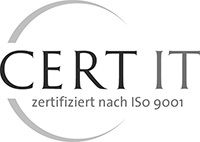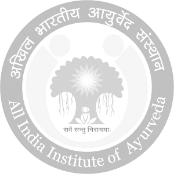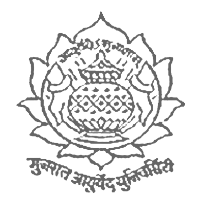Article by Kerstin Rosenberg
The more beautiful the summer, the greater the motivation to lose weight. Because every sunny day invites to be enjoyed in lightness and the summer clothes cover only with difficulty accumulated fat pads. Modern healthcare is also gearing up against an overweight population, with more than 50% of all children and adults said to suffer from obesity and adiposity. Supported by central politics and the public health authorities, doctors, nutritionists and dieticians are carrying out comprehensive educational work in kindergartens, schools and public institutions, pointing out the importance of a balanced diet and sufficient exercise in order to counteract the health-threatening consequences of weight problems. After all, overweight people not only suffer from their excess pounds while shopping in fancy fashion boutiques, but also develop many medical conditions, such as cardiovascular problems or diabetes.
However, the fact that it is not enough to tackle the stubborn fatty tissue in one's exposed "problem zones" such as thighs, buttocks and hips with a calorie-reduced diet has now been scientifically proven and can be confirmed by many people who have struggled for years with reduction diets and feelings of guilt. In order to lose weight successfully, an overall therapy plan is required, which includes an effective diet and exercise program, which is often intensified and supplemented by external treatments and massages, nutritional supplements and psychological support. In this sense, Ayurvedic medicine and nutrition also works out a therapy plan for each person individually adapted to his or her constitution, with which a holistic and lasting weight reduction and health promotion is possible.
Overweight is type-dependent
From an Ayurvedic point of view, not all people are affected to the same extent by the danger of becoming overweight, because according to the individual constitution, each metabolism reacts differently to the daily food utilization and intake. Particularly susceptible to the accumulation of fat deposits and water retention are all those who have a pronounced proportion of Kapha Dosha in their constitution. The so-called Kapha types (i.e. people who are characterised by a particularly pronounced Kapha from birth) naturally have a strong physique, a sluggish metabolism and an increased production of mucus. Their enduring strength and strong immune system are accompanied by the ability to build up a lot of tissue with little food and to store energy for a long time. These qualities were considered an excellent and privileged prerequisite for health as long as life was characterized by emaciation, famine and physical exertion. In today's society and way of life, on the other hand, in which we tend to suffer from an excess of food, lack of exercise and mental stress, Kapha people almost invariably suffer from slight to severe overweight and the resulting complaints. This is because unless a Kapha constitution is on a decidedly "anti-Kapha diet", in which all nourishing and tissue-building foods are severely restricted, they will automatically be a little fuller than our modern fashion dictates. Ayurveda, however, does not measure the standard of beauty and health with a tape measure and scales, but looks at each constitution in its own, type-appropriate potential. And in this, the lush Kapha beauty can very well compete with the elfin Vata grace or the athletic Pitta body:
Because Kapha people naturally have decidedly expressive eyes, strong hair, healthy skin and balanced body shapes. Their friendly nature is characterized by caring, patience and empathy. And even if their clothes need to be oversized, they often appear attractive and appealing. If a Kapha person suffers from overweight, the increased fatty tissue is distributed evenly over the whole body. This means that not only the circumference of the abdomen and thighs increases, but also the face, arms, chest and legs are padded roundly. If, on the other hand, a Kapha disorder in the form of overweight develops in a Vata or Pitta dominated constitution, the excess fat deposits manifest themselves exclusively on the abdomen (Vata) or around the hips and thighs (Pitta).
Overweight is a Kapha disorder
From an Ayurvedic point of view, the individual constitution of a person is formed by the three doshas Vata, Pitta and Kapha. Vata represents the principle of movement, Pitta the implementation and Kapha the stability. Diseases of all kinds arise from the imbalance of the three dosha forces. Obesity is considered to be an accumulation of Kapha.
The Kapha-Dosha represents the maintaining and stabilizing principle in the human organism and is composed of the elements Jala (water) and Prithivi (earth). It carries the function of the lymphatic and immune system and is involved in the formation of the body through the skeleton and cell structure. Its properties are: sweet, heavy, soft, cold, oily, mucous and stable. People with high Kapha are patient, strong, self-controlling, forgiving, dutiful and not selfish. They are sincere and constant in their relationships, but sometimes a bit sluggish and slow.
Causes of obesity from the point of view of Ayurvedic medicine
- Overeating, especially of fatty, fried foods, dairy products like cheese, yogurt and ice cream, excessive consumption of sugary foods, cold drinks
- Prolonged sitting, inactive lifestyle
- indigestion
- frequent eating between meals
- stress
- Taking medications such as corticosteroids or oral contraceptives or insulin
- Alcoholism
- unresolved conflicts - supposed solution through food (food for the soul)
- hormonal dysregulation, excessive production of growth hormones
Ayurvedic nutrition makes the pounds fall off
To reduce weight a Kapha reducing diet is necessary: All foods with a spicy, light, dry, bitter and heating component are especially good now and give the phlegmatic Kapha organism new energy and vitality. Meals should be prepared appetizingly with lots of vegetables and aromatic spices and herbs. All dairy products and animal proteins such as meat, eggs or cheese put a great strain on the digestive system and inevitably lead to mucus and weight gain. Therefore, if there is a strong excess of Kapha, animal proteins are best replaced by legumes and eaten along with plenty of vegetables. Very sweet and heavy foods such as pastry and bakery products, sweets and greasy and fried foods also increase Kapha and should be largely avoided.
Some foods and spices are particularly suitable for losing weight and are characterized by special properties that efficiently support the process of weight reduction. Thus, Ayurvedic nutritional therapy advises regular consumption of mung beans, barley, honey and chili to achieve rapid dietary success. Other important foods in the anti-Kapha diet include leafy greens such as spinach, chard and chicory, eliminative vegetables such as asparagus and celery, and all tart and pungent herbs and spices.
General Ayurvedic dietary recommendations for balancing weight
- Eat mainly warm and cooked foods. Salads, raw vegetables and fresh fruits are recommended only at lunch time.
- Drink a cup of hot water or ginger water every day at half-hour intervals.
- Eat three regular meals a day and avoid snacks in between.
- Drink a glass of hot water with honey for breakfast.
- Prefer mung beans, barley, artichokes, chicory and bitter leafy vegetables in your daily diet.
-Avoid all sweet, fatty and salty foods and eliminate sugar, cream, cheese, meat, sausage and fried foods from your diet.
- Use helpful spices like chili, ginger, hing, mustard seeds, pepper, horseradish and all fresh garden herbs in Ayurvedic cooking.
- Eat very little salt, and if you do, only rock salt.
- Support your metabolism with stimulating supplements such as barberry, triphala or trikatu.
Ayurvedic massages and sweat treatments for tissue reduction and toning
Ayurvedic treatments for tissue reduction and weight loss are extremely effective massage techniques through which kapha is reduced and specific areas of the body and tissues undergo deep detoxification. Complementary to the diet, the stimulating massages and manual therapies are very important to stimulate the tissue metabolism and support it in its detoxification and toning work. Through an active Agni, the organism burns deposited waste products (Ama) from the fat and connective tissue. The fatty tissue is broken down and the body volume is reduced. The metabolism stimulating treatments are called Langhana and work with dynamic strokes, heating herbs and medicated oils. After just a few applications, the body is noticeably lighter, firmer and more youthful.
The main massages for tissue reduction and elimination are performed with silk gloves, powders of ground grains and herbs, and hot gauze bags (boli):
- Gharshana - massage with the silk glove.
- Udvartana - massage with powders or pastes
- Pinda-sveda - massage with hot herbal sachets
The great effect of the manual Ayurvedic therapies on the reduction of fatty tissue is also due to the dynamic and powerful massage techniques with their specially added herbs. The pastes or herbal mixtures for Udvartana and Pinda-Sveda consist of grain powders enriched with herbs. Barley flour or chickpea flour can be used as the basic substance, which is then enriched with pungent and bitter herbs and spices such as triphala, trikatu, ginger, mustard seeds, methi seeds, turmeric or galangal.
Ayurvedic massages and Langhana therapies for weight loss
GHARSHAN Gharshan is a metabolism stimulating massage with silk gloves. The silk glove massage is an invigorating treatment in its own right, but can also be used as a preparatory measure in combination with other massages. It can be used as a full body massage, so it has a particularly stimulating effect on the lymphatic flow, or as a stimulating partial body massage in problem areas.
UDVARTHANA Udvarthana is a vitalizing massage with metabolism-stimulating herbal paste. The different mixtures and recipes are individually adapted to the metabolic function and constitutional characteristics.
PINDA-SVEDA Pinda-sveda is a local sweating treatment with gauze bags. The bags, so-called Pindas, are filled with metabolism-stimulating herbal essences. Then problem areas, such as thighs, buttocks or upper arms, are repeatedly massaged with the pindas heated in warm oil.
Ayurveda cures always help
If the weight problem is already genetically or constitutionally predisposed, a permanent change in diet is necessary to lose weight in the long term and to protect the body from the health problems that can arise from obesity. Only a consistent anti-Kapha diet, regular exercise and supporting massage therapies can now support you on the way to your personal ideal and feel-good weight. If all this does not help enough, Ayurvedic medicine works very successfully with the curative elimination concepts of pancakarma to bring about weight reduction and tissue tightening.
Especially in spring, a stay at a spa is worthwhile in order to get rid of the winter fat within 1 - 2 weeks. In Pancakarma, supplementary therapy methods and supporting procedures are used as tissue-reducing forms of treatment:
- sweating treatments (Svedana)
- medical cleansing procedures (Shodhana)
- Vamana (vomiting)
- Virecana (purging)
- Basti (enema)
- Upavasa (fasting)
- Vyayama (physical exercise)
Obesity can also be psychological
For many people, daily meals serve not only as food intake, but are a means of compensation that goes far beyond simply providing sustenance. The quantity and choice of preferred foods is often determined not by reason, but by feelings and living conditions. This is because food is often a mechanism by which feelings, sexual tensions, or painful aspects of life are suppressed. Fat can become an effective armor from human closeness and affection. Excess fat stores not only a great deal of waste and ama, but also the negative emotions of self-hatred, guilt, depression, loneliness, helplessness, anger, fear of others, fear of self, and self-pity. Whether the person is just trying to feel better through food or is deliberately overeating out of self-destructive thoughts, the build-up of kapha tissues produces happiness hormones as a counterbalance, feigning the feeling of contentment and inner peace after eating.
Especially unhealthy foods like sweets and fast food thus serve as emotion and stress compensators, as overeating or eating bad, impure and too heavy food is a way to numb and hide from real life. However, according to Ayurveda, an overly ascetic and extreme diet also distracts from one's health and life fulfillment, as it demands too much energy, attention and life-denying thoughts. Only those who are willing to let go of these feelings and transform them will be able to free themselves from the excess fat layers and waste products that keep them away from true beauty, ease and joy in life. This often requires therapeutic support and holistic treatments by an experienced Ayurvedic therapist for physical and psychological well-being.












